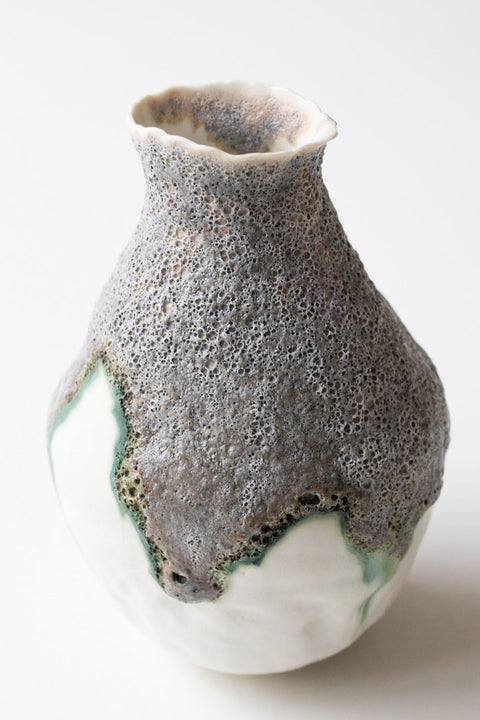
My 5 tips for hand-building with porcelain
Porcelain is a very special material in the ceramics world. Some fear it, some are obsessed with it. I love porcelain because of the canvas it offers for glazes: they look amazing on a pure white background.
That said, porcelain is a difficult material to work with, especially for hand-building. While there is a lot to be said, below are my top 5 tips for hand-building with porcelain.
- Not all porcelain clay bodies are created equal, so test a variety of them before making a big purchase. Some porcelain clay bodies are more plastic than others (it all boils down to kaolin contents and types of kaolin). If you are not interested in high translucency, you will be able to find some plastic porcelain clay bodies that are easier to work with. You can also learn to make your own clay body.
- Wedge, wedge, wedge. Wedging clay is important, and even more so for porcelain. I spend a lot longer wedging porcelain clay before I start working, to help all the particles mix up and align.
- When building from slabs, you will notice porcelain dries a lot quicker than other clay bodies. I tend to work faster to avoid it cracking.
- I discourage all my students from overusing water when hand-building with stoneware and this is even more true for porcelain. While porcelain dries quicker, it also slumps and looses shape more easily, so do not go overboard with water.
- Dry very slowly: uneven drying will cause cracks. So make sure that your pieces are drying very very slowly (under plastic or in a specific container), a lot slower than your usual stoneware pieces.

